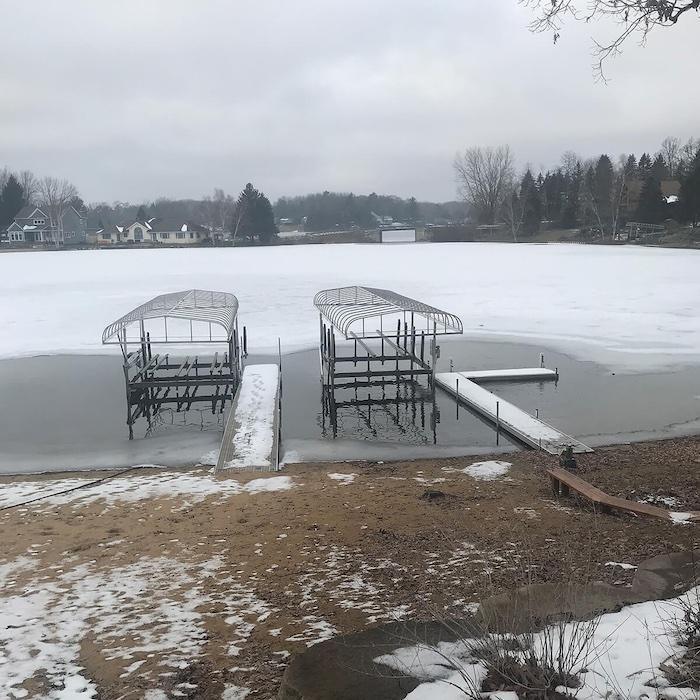
How to Choose a De-Icer for Your Pond: A Comprehensive Guide
As winter approaches, pond owners face the challenge of keeping their water features in good condition despite freezing temperatures. A frozen pond can lead to a host of issues, including the potential harm to aquatic life, damage to equipment, and unsightly ice formations. To combat these problems, a de-icer is a crucial investment. In this comprehensive guide, we'll explore how to choose the right de-icer for your pond.
Understanding the Importance of De-Icers
Before delving into the selection process, let's discuss why de-icers are essential for maintaining a healthy and functional pond during winter:
1. Oxygen Exchange
In winter, a pond's surface can freeze, preventing oxygen from entering the water and harmful gases from escaping. This can be fatal for fish and other aquatic organisms. De-icers create an opening in the ice, allowing for vital oxygen exchange.
2. Preventing Ice Damage
Ice can exert tremendous pressure on the walls of your pond, potentially causing structural damage or leaks. A de-icer prevents the formation of thick ice and protects the integrity of your pond.
3. Temperature Regulation
De-icers help maintain a stable water temperature, preventing extreme cold that can be detrimental to fish and plants.
Now, let's explore the steps to choose the right de-icer for your pond.
1. Pond Size and Depth
The size and depth of your pond are critical factors in choosing a de-icer for your pond. Calculate the volume of your pond by multiplying its length, width, and depth. Smaller ponds may require a single de-icer, while larger or deeper ones might need multiple units or a more powerful de-icer.
2. De-Icer Type
There are three primary types of de-icers:
a. Floating De-Icers
Floating de-icers, such as the Scott Aerator Floating De-Icer, are designed to float on the water's surface. They are effective at preventing ice formation in a localized area. However, their coverage area is limited, so they are best suited for smaller ponds.
b. Submersible De-Icers
Submersible de-icers are placed at the bottom of the pond. They work by heating the water from below, preventing ice formation over a larger area. These are ideal for ponds with fish, as they create a more even distribution of heat. The EasyPro Air De-Icing System is one of the more popular de-icers on the market and ideal for most docks. If using an ice-eater for boat docks, the Scott Aerator De-icer is ideal and comes in four different sizes to make sure whatever size dock you're working with is protected.
c. Thermo-Pond De-Icers
Thermo-pond de-icers are a combination of floating and submersible units. They are versatile and can be used in various pond sizes and depths.
3. Heating Power
The heating power of a de-icer is measured in watts. Larger and deeper ponds typically require higher wattage to maintain an ice-free area. Check the product specifications to ensure it matches the size and depth of your pond.
4. Energy Efficiency
Consider the energy efficiency of the de-icer you choose. Energy-efficient models can help reduce operating costs during the winter months. Look for de-icers with features like automatic shut-off when not needed.
5. Durability and Material
Opt for a de-icer made of durable materials like stainless steel or high-quality plastic. Pond de-icers are exposed to harsh conditions, and a sturdy construction ensures they can withstand the elements.
6. Safety Features
Safety is paramount when selecting a de-icer. Look for models with features like a thermostat-controlled operation that prevents overheating and automatic shut-off to prevent damage.
7. Ease of Installation and Maintenance
Choose a de-icer that is easy to install and maintain. User-friendly models will save you time and effort when setting up and caring for your pond during the winter.
8. Budget Considerations
De-icers come in a range of prices. While it's important to stay within your budget, prioritize quality and suitability for your pond's needs. A well-chosen de-icer is an investment in the health of your pond.
9. Local Climate
Consider the local climate when choosing a de-icer. If you live in an area with severe winters and prolonged freezing temperatures, you may need a more powerful de-icer.
10. Reviews and Recommendations
Research online reviews and seek recommendations from fellow pond owners. Real-world experiences can provide valuable insights into the performance and reliability of different de-icers.
Conclusion
Selecting the right de-icer for your pond is crucial to ensure its health and longevity during the winter months. Consider factors such as pond size, de-icer type, heating power, energy efficiency, durability, safety features, ease of installation, and your budget. Additionally, tailor your choice to the specific climate of your region and seek advice from trusted sources.

